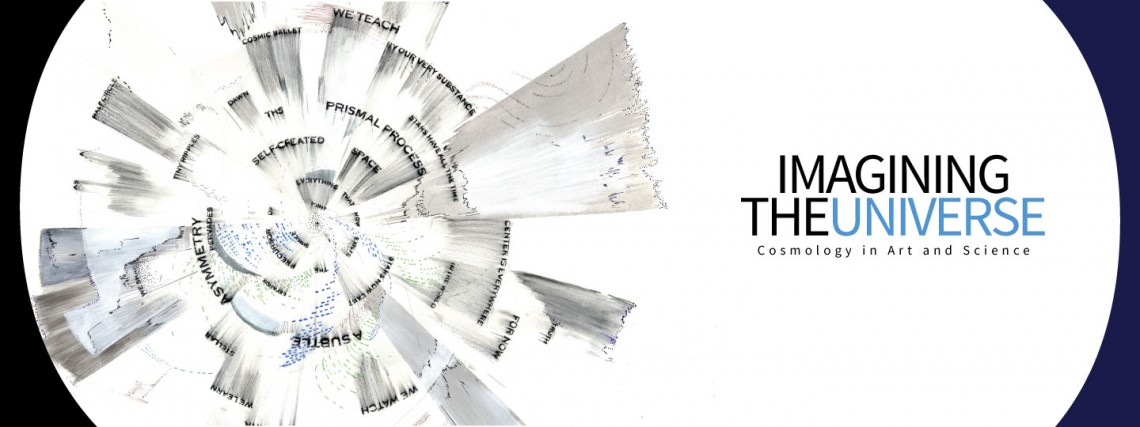Imagining the Universe: Cosmology in Art and Science series launches with words
Spotlight on the book: Cosmicomics, Life on Mars, A Place Among the Stars
OCT. 27 – Out of this world: Italo Calvino’s Cosmicomics
Author Italo Calvino’s whimsical view of the universe will be explored at 7:30 p.m. on Oct. 27 at Stanford Humanities Center as part of Stanford’s “Another Look” book club and in conjunction with the series Imagining the Universe. Acclaimed author Robert Pogue Harrison, professor of French and Italian, will moderate a panel with award-winning novelist and professor of English Tobias Wolff, and literary journalist and visiting scholar Cynthia Haven, who blogs at The Book Haven.
“Climb up on the Moon? Of course we did. All you had to do was row out to it in a boat and, when you were underneath, prop a ladder against her and scramble up.” So begins the improbable tale of a man in love with the moon, and the woman in love with him, at a time when the moon was so close to the earth you could …
Wait a minute. The moon, at the dawn of time when it was closest to the earth, was still at least 12,000 miles away. Too long for any ladder. Clearly, Italo Calvino (1923-1985), one of the greatest European writers of the last century, took a mountain of artistic license when he published his science-based fantasies, Cosmicomics, in 1965. But for the generations of readers swept away with the wit and magic of these loosely linked stories, that’s part of the fun.
OCT. 28 – Tracy K. Smith: Life on Mars
With allusions to David Bowie and interplanetary travel, Life on Mars by poet Tracy K. Smith imagines a soundtrack for the universe to accompany the discoveries, failures and oddities of human existence. Smith will be on campus for a public conversation at 6 p.m. on Oct. 28 at the Language Corner, Pigott Hall, room 113.
In her brilliant poems, Smith imagines a sci-fi future sucked clean of any real dangers, contemplates the dark matter that keeps people both close and distant, and revisits the kitschy concepts like “love” and “illness” now relegated to the Museum of Obsolescence. These reveal the realities of life lived here, on the ground, where a daughter is imprisoned in the basement by her own father; where celebrities and pop stars walk among us; and where the poet herself loses her father, one of the engineers who worked on the Hubble Telescope.
Smith’s Pulitzer Prize-winning poems establish her as among the best poets of her generation. In addition to Life on Mars, which won the Pulitzer in 2012 and was selected as a New York Times Notable Book, Duende won the 2006 James Laughlin Award from the Academy of American Poets and an Essence Literary Award, and The Body’s Question was the winner of the 2002 Cave Canem Poetry Prize. Smith was the recipient of a Rona Jaffe Writers Award in 2004 and a Whiting Award in 2005, and is also the recipient of the 2014 Academy of American Poets Fellowship.
Stanford Graphic Novel Project 2014: A Place Among the Stars
Every other year, the Stanford Graphic Novel Project admits a team of student artists, writers and designers in the graphic novel course and produces a book. The most recent title is A Place Among the Stars: Thirteen Women and Their Quest for Space, about the Mercury 13, a group of female pilots in the 1960s who wanted to be the first women in space. The book is dedicated to Sally Ride ’78, the first American woman in space with the launch of the space shuttle Challenger.
On a fateful day in 1961, Dr. Randy Lovelace, a physician in charge of assessing the physical fitness of potential astronauts, is walking along a Miami beach during a break at a physician’s conference. He runs into pilot Jerrie Cobb. Lovelace has been preoccupied by the question of whether women – taking into account factors such as weight, size and tolerance for pain – might indeed be better suited for space travel than men. World-record-breaking pilot Cobb is the perfect candidate to test Lovelace’s theory.
And so begins the true story of the astronaut testing program that will enlist 13 women who sacrifice much in the belief that they, too, will be considered serious candidates to be among the first Americans in space.
Free copies of A Place Among the Stars are available in the Creative Writing Program office, while supplies last.


